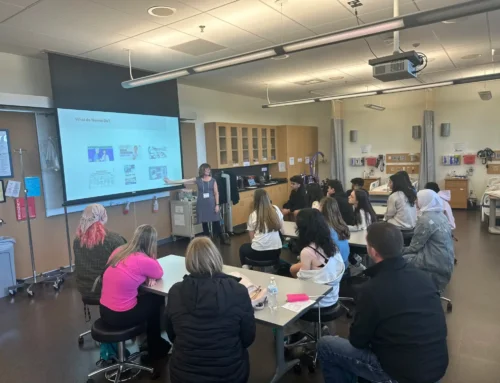 After a recent day-long visit to a local middle school, I came away with the (happy) realization that reading, writing, listening, and speaking occurred in every class I observed. I observed 7th grade students closely reading informational texts from the Center for Disease Control and Prevention and the National Institutes of Health about antibiotic resistance. They were busily taking notes to help craft an argumentative writing piece. 8th grade students were enthusiastically debating federal immigration policy, citing evidence from multiple texts and primary sources to support their claim. In a 6th grade math class, students thoughtfully read through a performance task to determine how to solve a complex problem and communicate their understanding both verbally and in writing.
After a recent day-long visit to a local middle school, I came away with the (happy) realization that reading, writing, listening, and speaking occurred in every class I observed. I observed 7th grade students closely reading informational texts from the Center for Disease Control and Prevention and the National Institutes of Health about antibiotic resistance. They were busily taking notes to help craft an argumentative writing piece. 8th grade students were enthusiastically debating federal immigration policy, citing evidence from multiple texts and primary sources to support their claim. In a 6th grade math class, students thoughtfully read through a performance task to determine how to solve a complex problem and communicate their understanding both verbally and in writing.
Two of the major shifts under the English Language Arts Common Core Standards are building knowledge through content-rich nonfiction and regular practice with complex texts and their academic language. In fact, the ELA CCSS in grades 6-12 explicitly address literacy in the areas of history/social studies and science and technical subjects. One period of English class per day will not support students in developing the informational reading and critical thinking skills needed to be college and career ready. Rather, it is imperative that disciplinary literacy instruction is provided in content area classrooms throughout the school day.
Disciplinary literacy is defined by Tim Shanahan as “literacy skills specialized to history, science, mathematics, literature, or other subject matter.” You might hear teachers instructing their students to “read like scientists or historians”—this is disciplinary literacy. The goal is to empower students to read, write, speak, and listen critically in order to increase their content knowledge. The International Literacy Association states, “When educators work together to plan and implement disciplinary literacy practices…both ELA standards and content standards are more likely to be met and students will develop a deeper understanding of the content.” (ILA 2015)
To read more about disciplinary literacy and strategies for supporting teachers with these shifts, the International Literacy Association and the Common Core State Standards Committee have published the position statement, “Collaborating for Success: The Vital Role of Content Teachers in Developing Disciplinary Literacy With Students in Grades 6-12.” If you are interested in learning more, check out this LINK.



